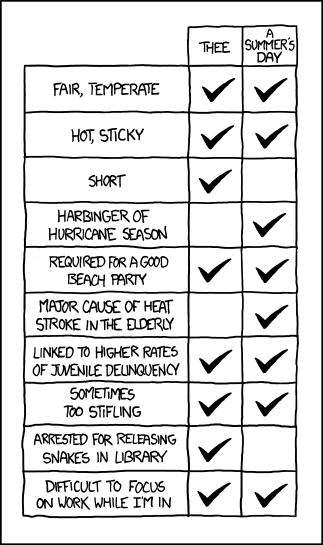[vimeo http://vimeo.com/38223344 w=700&h=390] Watch this video, Plan B's directorial debut. Angry and passionate, mixed up and furious. Lots of hate pouring off the screen and out of the speakers - I mean, listen to the chorus! But then, once you've let it settle and you feel you have a handle on it, allow it context beyond your initial reaction. Context such as below, an extract from his TEDx speech (and the full speech itself).
I'm working really hard at the minute trying to finish my directorial debut,Ill Manors, which is a hip-hop-based film. When people ask me what the film is about, I say it's about all the things we read in the newspaper; the despicable things that I don't think many of us agree with when we read them. The papers tell us that they happen but they never tell us why they happen. So Ill Manors is trying to get to the bottom of why we have these problems in society with our youth, why we constantly keep on reading negative things about our youth.
The reason I've done this is because I got kicked out of school in year 10 and no other schools would take me. I had to go to a pupil referral unit called the Tunmarsh Centre in Plaistow. I was there with other kids from a lot more dysfunctional families than me. They'd been through a lot more than me. And one thing we shared is we didn't have any respect for authority, whether it be teachers or police.
I think the reason why we didn't have respect for authority was that we felt that we were ignored by society, that we didn't belong to it. And so we wouldn't listen to anyone apart from our favourite rappers. We would let this music raise us and, though most of will never meet those artists in our lives, their words are what guided us.
Unfortunately, some of those words are negative. Within hip-hop there's some that romanticises street life and being a gangster and selling drugs. But there's also conscious hip-hop. I was a fan of conscious hip-hop. I was a fan of the hip-hop that was like poetry. It was like reading a book and it changed your life. Just one sentence could change your life. I realised that this was a powerful tool and I wanted to change things; I wanted to change the stuff that I read in the paper or the stuff that I came in direct contact with which I didn't agree with.
Damilola Taylor was 10 years old when he lost his life. He was stabbed by a kid who was maybe only five or six years older than him. This is a child killing another child. I didn't agree with that. I didn't agree with the mentality that a lot of these kids were going round with, but I understood why they were going round with it. I understood that they were from broken families. They had parents who were probably alcoholics, drug addicts, dysfunctional, who raised them up to believe they could never make anything of themselves because they as parents never made anything of themselves.
The great thing about Tunmarsh was it was a place where these kids could go and, for the first time in their life, be shown encouragement and motivation and be told that they can make something of their lives. They can come from a negative family environment [but] they only have to bump into one person that can plant one positive seed in their head and in their heart and it can change their life. Tunmarsh was full of these positive teachers. When I left there I went on this journey through hip-hop music and I decided to write an album that tried to reach out to these kids and I tried in some ways, I guess, to be a father figure to these kids because they were parentless.
What does the word chav mean? The term may have its origins in the Romany word "chavi", meaning child. My godfather used to call me chav, but it was affectionate. I used to enjoy it. So what does that word mean now? I believe it stands for "council house and violent". It's a word that is used to ridicule and label people who come from a less educated background than the rest of society. For me, it's no different from similar words used to be prejudiced towards race or sex. The difference is, in this country we openly say the word chav. The papers openly ridicule the poor and less unfortunate. If you did the same thing with race or sex, there'd be public uproar and rightly so. But why is it different with this word?
I believe that there is a demonisation of the youth throughout the media. And people are falling for it, because if you'd had no direct contact with the kids that I'm talking about how the hell can you judge them? Because you're only judging them based on something you read in a newspaper, aren't you?
See, this fuels the fire. If you call kids words that are derogatory to them just because they are unlucky enough to be born into a family that couldn't afford to give them the education that you had, they're going to hate you. Of course they're going to hate you and you're going to hate them because of their actions. And it's this vicious circle that goes round. By calling these kids these words you push them out of your society and they don't feel part of it. You beat them into apathy and in the end they just say: "Cool, I don't care. I don't want to be part of your society."
And then the riots happen, right? We've got a generation of youths out there on the streets. The weather is hot, it's nice. They ain't got nothing to do because all the community centres have been shut down. And all the money that was put into summer projects to keep these kids monitored and occupied [has gone]. Their parents ain't going to take them out of the country on holiday. You've got a whole generation of kids that do not feel that they're part of this society and they start rioting and looting. And taking the things that society has made them feel are the most important things. Sheldon Thomas [former gang member and mentor] said: "If you ask how we became a society where young peoplethink it's OK to rob and loot, I respond how did we get to a society that cares more about shops and businesses than lives of young people." That's some strong words right there.
This guy, he's from Forest Gate, comes from a dysfunctional family background like myself, had a bad attitude but [he's] very talented. And I took him on the road with me and I showed him the opportunities that were out there for him. Andrew Curtis was trained by Vidal Sassoon. He was offered a very high-paying job. He said: "No, I don't want to take your job. I won't take your money." He said: "I want to go and start an academy where we teach underprivileged kids how to cut hair."
And so he did. Him and his girlfriend got this building and they set up this salon. They're living there and they're putting their hands in their pockets to pay for the things that these kids need in order to be trained. Because no one is giving them any funding. So he's got kids who without this would have criminal records, who would go to prison. They'd be going down that path. No one is funding him, no one is backing him to do this. He's doing this off his own back, just out of love.
Everyone knows one person out there they can help who's less fortunate than them. And I'm not talking about help financially. I'm talking about knowledge. Plant that seed. Find out what these kids are good at, or what they care about or what they like, and try and draw it out of them because it will change their lives.
There's a song by Jacob Miller called "Each One Teach One". It's a reggae song. You should listen to that song because that's all we've got to do.
[youtube=http://www.youtube.com/watch?v=xhtAfIw4qJY&w=700]


 (
(




